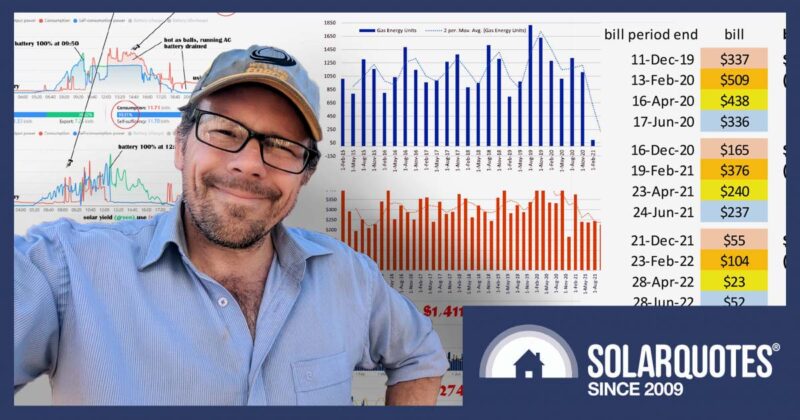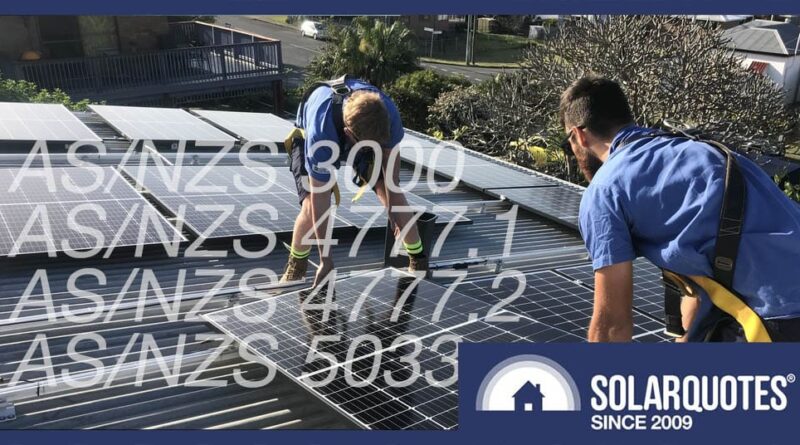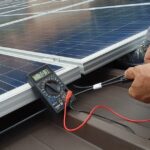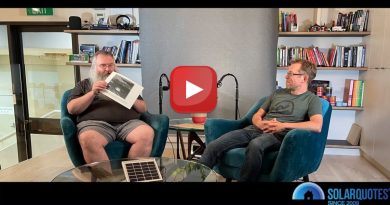Australian Solar Standards, Regulations, Rules & Guidelines Explained
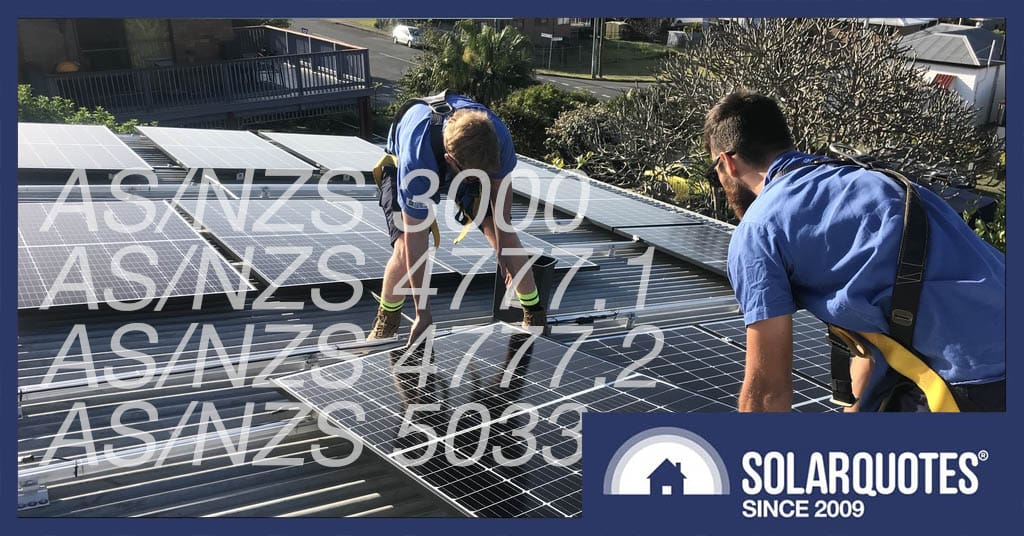
Image credit: MC Electrical
Whenever we discuss new rules or solar standards on the SolarQuotes blog, we invariably get comments asking if these rules apply to the commenter’s situation.
This blog explains the hierarchy of national standards, state regulations, DNSP rules and SAA guidelines and what that means for everyone buying, using and especially working with solar energy.
The Hierarchy of Electrical and Solar Regulations
#1 Australian Standards
National Australian Standards are the cornerstone of safety and uniformity in Australia’s solar industry. Key among these is AS/NZS 3000, known as the Wiring Rules, which supports other critical standards like AS/NZS 5033 for photovoltaic systems and AS/NZS 4777.1 for grid-connected energy systems. These standards govern crucial installation and safety aspects, ensuring that all solar installations maintain high levels of safety, promoting public trust, and supporting industry growth.
#2 State/Territory Regulations
State-specific rules also play a significant role. For instance, Victoria may have unique installation guidelines that slightly vary from those in Queensland or New South Wales, tailored to meet local environmental conditions. Your electrician is required to follow both national and state-specific regulations.
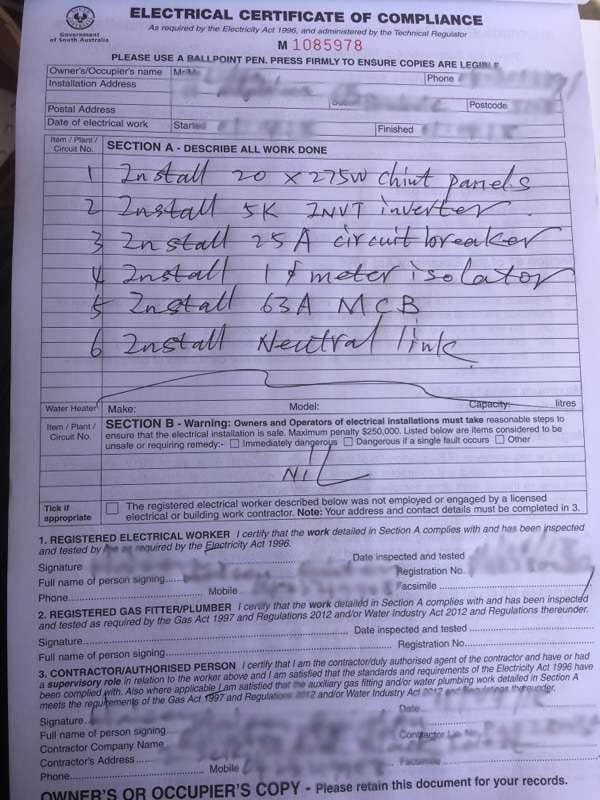
An example of an Electrical Certificate of Compliance for a solar installation, illustrating the detailed documentation required for regulatory adherence.
A Focus on Victoria
Rather than go through every State and Territory’s rules, as a Victorian electrician, I’ll use Victorian state rules as an example.
While Australian Standards provide the framework, Victoria’s specific regulations, such as the Victorian Electrical Safety General Regulations (ESGR), tailor this framework to meet local needs. These regulations mandate compliance with key safety and technical requirements.
Victoria’s rules focus more on practical skills than theory. They also require strict inspections for solar installations, considered major electrical work. This differs from most other states that don’t mandate inspections and only act when there’s a problem.
#3 DNSP Rules – Connecting to the Grid
When connecting solar installations to the grid, Distribution Network Service Providers (DNSPs) play a crucial role. As the owners and operators of the electrical grid, DNSPs enforce specific regulatory standards to ensure that any new connections do not compromise the grid’s integrity and safety. This introduces another layer of complexity for solar installers, especially in areas serviced by multiple DNSPs.
Across Australia, there are 14 different DNSPs, each potentially with its own set of connection requirements. However, one constant among all DNSPs is the mandatory compliance with AS/NZS 3000, AS/NZS 4777.1, and AS/NZS 4777.2. AS/NZS 4777.1 covers the requirements for grid connection of energy systems via inverters while AS/NZS 4777.2 focuses on the inverter requirements for grid connection.
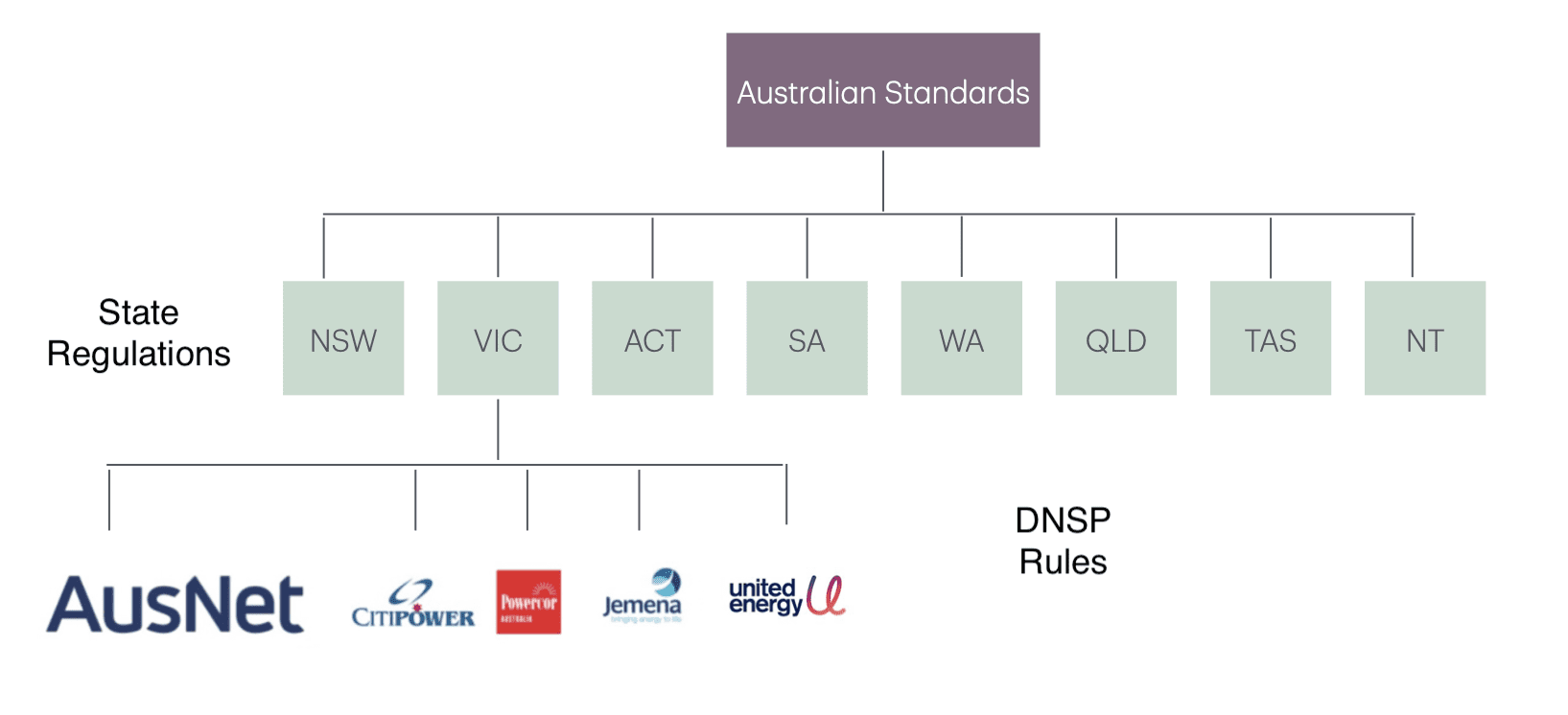
There are 14 DNSPs across Australia, and this diagram shows the five across VIC. Your postcode determines your DNSP, and each DNSP has its own rules for connecting to its grid.
For installers working across different states or regions with multiple DNSPs, this can pose significant challenges. Each DNSP may interpret and enforce these standards slightly differently, requiring installers to be extremely diligent and well-informed about the specific requirements of each DNSP under which they operate.
Alex, one of the contractors I inspect systems for, says:
“Dealing with multiple DNSPs can be quite a headache, especially as a relatively new contractor in the solar industry,”
“Each area has its own set of rules and application processes and I’ve found myself occasionally mixing them up which sets back our installation timelines. It’s a learning curve making sure we align with the right DNSP’s standards from the get-go.”
To effectively navigate this intricate landscape, solar professionals must establish strong communication lines with DNSPs and stay updated on any changes to their requirements.
#4 SAA Guidelines: Required For STCs
Small-scale Technology Certificates (STCs), part of the Federal Government’s Small-scale Renewable Energy Scheme, are pivotal in promoting solar adoption through the ‘solar rebate‘. However, securing these benefits adds another layer of compliance – specifically, Solar Accreditation Australia’s (SAA’s) Installation Guidelines. These guidelines are SAA’s interpretation/clarification of various Australian Standards, including controversial rules like the solar array oversizing limits. If your installer doesn’t follow the latest guidelines, you aren’t eligible for STCs on your new solar system.
Conclusion
Solar professionals must navigate not only national Australian Standards but also a myriad of state-specific regulations, DNSP rules, and SAA guidelines.
The distinct rules of each state can make compliance daunting, particularly for installers who operate across multiple jurisdictions.
And it can confuse the lay person reading about the latest rule or regulation updates. Going forward, when we explain a rule on this blog, we’ll be clear to identify it as either:
- an Australian Standard
- a State / Territory Regulation
- a DNSP rule
- or a SAA guideline required for STC creation
Then, you can refer to this post to see if it affects you.
Are you a solar professional or consumer interested in understanding more about how these regulations affect your projects and investments? Join the conversation by sharing your experiences or asking questions in the comments below. If you’re looking for more detailed guidance or need assistance with specific regulatory challenges, don’t hesitate to reach out. Let’s work together to ensure that our move towards renewable energy is both efficient and safe.
Original Source: https://www.solarquotes.com.au/blog/solar-guide-to-regulations/

